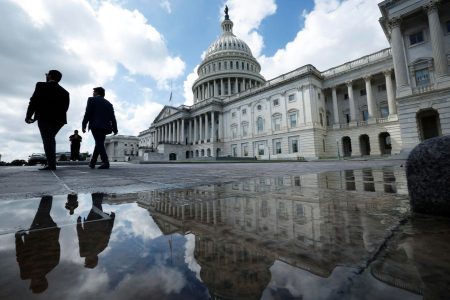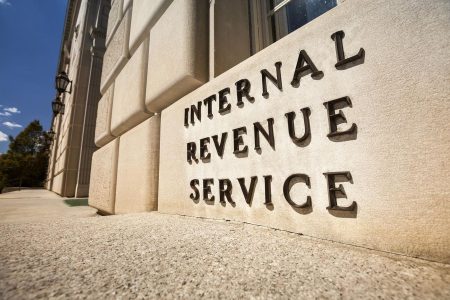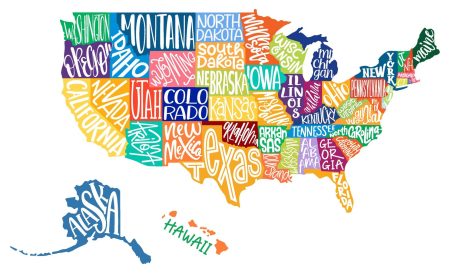In 2024, a job offer isn’t just a job offer. Increasingly, applicants are looking beyond salaries and comparing benefits before saying “I do” to a new job. One benefit that stands out? Qualified educational assistance programs—a provision found in section 127 of the tax code.
Section 127 was created by Congress in 1978 and was intended to be a temporary benefit for employees planning to pursue an education while working. It was made permanent in 2012 and amended again during the pandemic. Today, section 127 allows employers to pay employees up to $5,250 tax-free for educational assistance, including (for now) repaying student loan debt. This week, the IRS updated their FAQs focused on the program. Here’s what you need to know.
Educational Assistance Programs
Section 127 allows taxpayers to exclude up to $5,250 benefits from gross income each calendar year if those benefits are provided under a section 127 educational assistance program. In practical terms, that means you won’t see the cost of those benefits on your Form W-2. Unused amounts can’t be carried forward. (And, it means that your employer can deduct those benefits under section 162.)
However, if you don’t take those benefits into income—meaning they won’t show up on your tax return—you can’t use any of those education expenses to claim a deduction or credit, including the lifetime learning credit. (If your educational expenses don’t qualify for tax-free treatment, including any amounts over the $5,250 threshold, you can use those to claim related deductions and credits.)
Details
Tax-free educational assistance benefits under a section 127 educational assistance program include payments for tuition, fees, and similar expenses, as well as books, supplies, and equipment. The payments may be for undergraduate or graduate-level courses. Unlike earlier iterations of the plan, they do not have to be for work-related courses.
Notably, for those juggling student loan debt, tax-free educational assistance benefits now also include principal or interest payments on qualified education loans (as defined in section 221(d)(1)). A qualified education loan is a loan for education at an eligible educational institution, including any college, university, vocational school, or other post-secondary educational institution. However, as with student loan interest deduction, a loan must not be issued or guaranteed under a Federal post-secondary education loan program to be a qualified education loan.
To qualify, the loans must be incurred by the employee for the education of the employee and not for the education of a family member such as a spouse or dependent—it must be provided for the exclusive benefit of employees.
Payments can be made directly to a third party (like an educational provider or loan servicer) or the employee. And Gen X-ers rejoice: unlike other programs, it does not matter when the qualified education loan was incurred. But—and it’s a big but—to qualify for the tax break, student loan payments must be made by the employer after March 27, 2020, and before January 1, 2026—this particular perk under section 127 will expire if Congress doesn’t re-up it.
Educational assistance benefits do not include payments for meals, lodging or transportation, tools or supplies (other than textbooks) that you can keep after completing the course of instruction, or courses involving sports, games, or hobbies unless they have a reasonable relationship to the business of your employer, or are required as part of a degree program.
Limits
There are no specific income limits for receiving educational assistance benefits. However, under the tax code and regulations, an educational assistance program must not be discriminatory in favor of employees who are highly compensated employees.
By rule, not more than 5% of the amounts paid or incurred by the employer for educational assistance during the year may be provided for individuals who are shareholders or owners (or their spouses or dependents), each of whom, on any day of the year, owns more than 5% of the stock or the capital or profits interest in the employer. That means, as a practical matter, that if the owners are the only employees, they cannot receive educational assistance under section 127 because of the 5% benefit limitation. With that limitation, the IRS says that the following formula can be used to determine the amount of educational assistance that an owner/employee can receive: [total amount of educational assistance provided to employees other than the owner/employee] x .05263158 = [amount of educational assistance that the owner/employee can receive (not greater than $5,250)].
Other Options
You may be eligible for other tax and employment benefits if you don’t qualify for educational assistance benefits.
The American Opportunity Credit is worth up to $2,500 towards eligible expenses for each student who qualifies, but you can only claim the credit for up to four tax years per student (you must be pursuing a degree or other recognized credential). A whopping 40% of the American Opportunity Credit may be refundable—that means that if your credit is more than your tax, the excess will be refunded to you. Note that income limitations apply.
The Lifetime Learning Credit is worth up to $2,000 per year. There is no limit on the number of years the credit can be claimed for each student. Income limitations apply here, too. For the 2024 tax year, the adjusted gross income (AGI) amount for joint filers is $160,000; the AGI amount for single filers is $80,000. That amount is not adjusted for inflation for taxable years beginning after December 31, 2020.
You may also claim the student loan interest deduction for interest paid during the year. For 2024, the $2,500 maximum deduction for interest paid on qualified education loans will begin to phase out for taxpayers with modified adjusted gross income above $80,000 ($165,000 for joint returns) and will completely phase out for taxpayers with modified adjusted gross income of $95,000 or more ($195,000 or more for joint returns).
Your student loan does not have to come from PHEAA or another institutional student loan provider to be deductible. You can include other debt, such as credit cards, bank loans, or a line of credit if you use those loans only to pay qualified education expenses—do not commingle expenses. Borrowed funds cannot be from a related person or made under a qualified employer plan.
(And if someone else makes a student loan payment on your behalf, the payment can be treated for federal income tax reasons as though you made the payment. For example, if your mom and dad pay some of your loans, you can still claim the interest for purposes of the deduction. But be careful: If your parent claims you as a dependent, but you are legally obligated to pay the loan, neither of you can take the deduction.)
Section 132(d)—sometimes referred to as the working condition fringe benefit exception—allows for tax-free property or services provided to an employee to the extent that, if the employee paid for such property or services, it would be allowable as a deduction under section 162 (trade or business expense) or section 167 (depreciation).
This means employers can provide tech items, like computers, to employees under some circumstances. Under an accountable plan, they can also reimburse employees for remote work expenses, like internet costs related to working from home.
But section 132(d) isn’t the only out to prevent a bigger tax bill. Certain exemptions and exclusions from income might already apply to particular property and services—like de minimis benefits, meals, and transportation benefits available to employees—keeping some payments tax-free.
Conclusion
Not all benefits are created equal. Be sure to give those benefit plans a look—but don’t get lost in section numbers. What might not be allowed under one section may be allowable under another. If you have questions, check with the HR department at the company or your tax professional—or both.
(Updates to FAQs were announced in IR-2024-167. As a reminder, FAQs on the IRS website have not been published in the Internal Revenue Bulletin and are not considered official guidance. If an FAQ turns out to be an inaccurate statement of the law as applied to a particular taxpayer’s case, the law—not the FAQs—will control. That said, if a taxpayer reasonably and in good faith relies on these FAQs, the taxpayer will not be subject to a penalty to the extent that reliance results in an underpayment of tax.)
Read the full article here










